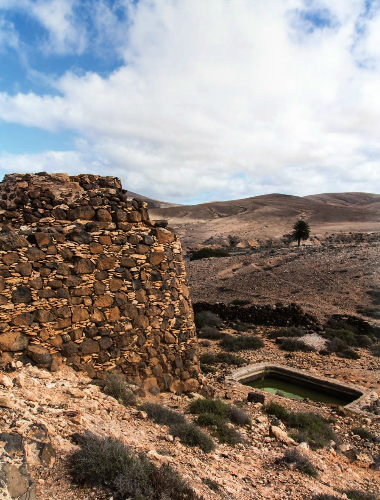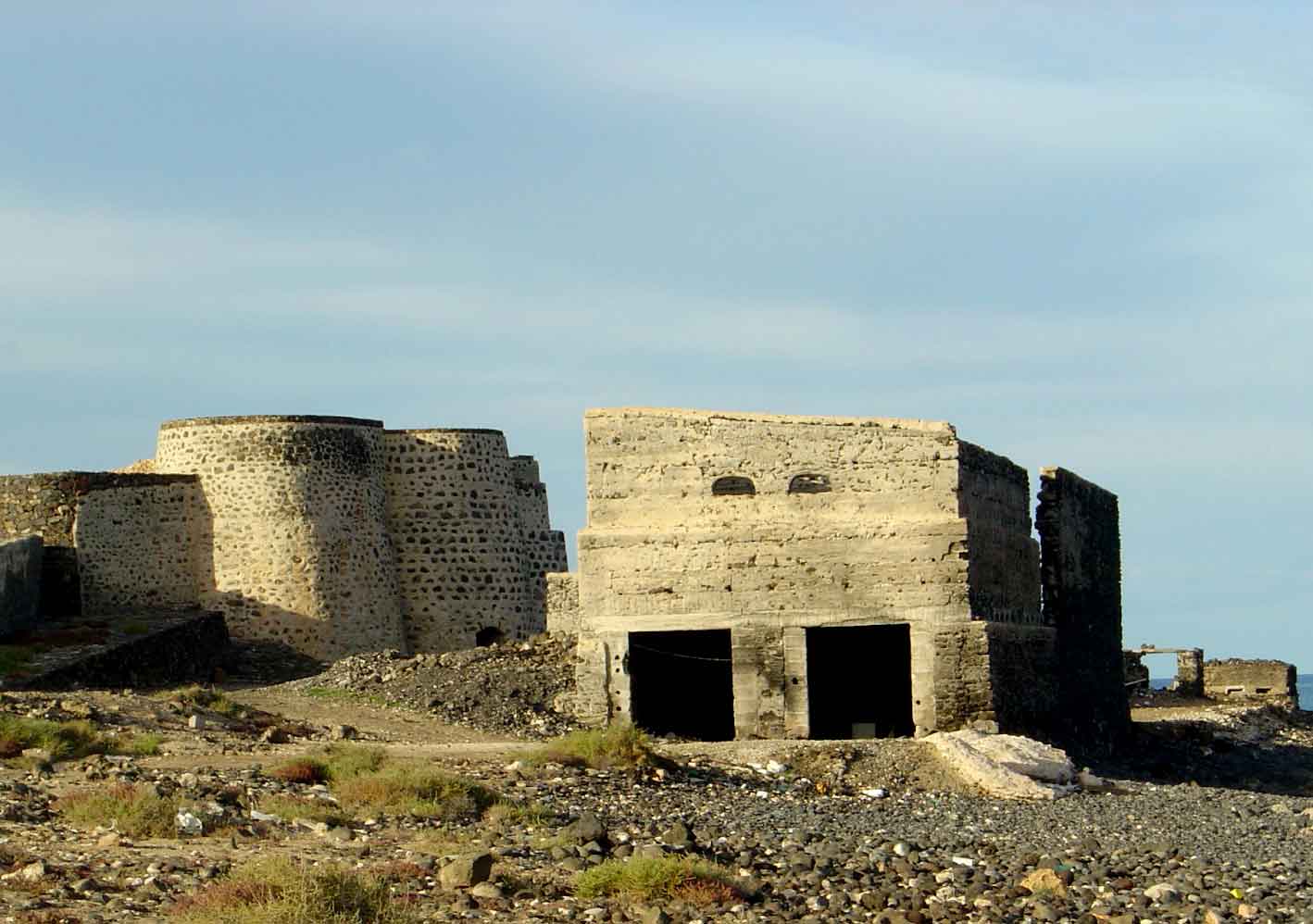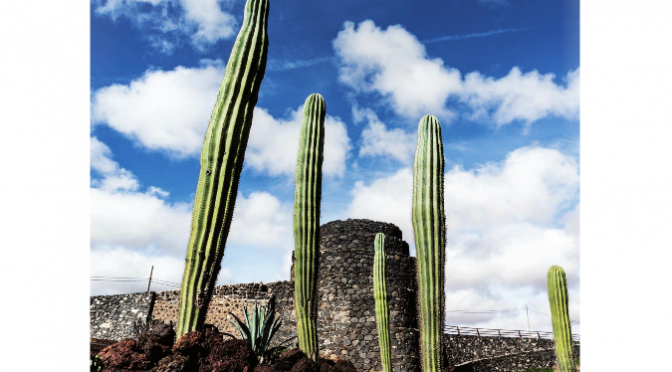During the XVII, XVIII and XIX centuries, one of the activities that moved the economic outlook in the history of Fuerteventura, providing a means to make a living for many families, was the export of lime to Gran Canaria, Tenerife and La Palma.
There was, and still are currently, in Fuerteventura a large amount of limestone, which at high temperatures (900 to 1000C) becomes lime of two different kinds:
- “Albeo” Lime : used to whiten walls. It is an organic lime obtained from large sedimentary deposits of shells of marine animals. It is usually found by the coast. Higher temperature and longer cooking time is needed to get that king of lime.
- Chemical Lime or lime stone: it’s found in the interior of the island, a few inches deep, and is used for construction, to purify water cisterns …
Therefore, today we can find many different kinds of lime kilns. Some of the 300 that are estimated to have existed in the island have been restored, but by 1970 cement replaced this material, doing away with the office of the lime merchants, which began on the island around 1641.
Initially vessels that collected lime to export to the other islands anchored in ports such as El Cotillo, Caleta de Fuste and Ajuy, where there was no dock; then the loading of ships was very laborious, as lime cannot get wet, because if it does its volume increases up to 50%. It had to be carefully transported by barge to the ships that once loaded journeyed to their destination, praying for the lime not to get wet, since an increase in volume could make the ship burst.
When it was discovered that the bay of Puerto del Rosario was much better, all activity moved to the capital, it turning, in the first half of the twentieth century, into “Puerto de la Cal”, where a number of industrial sites were built, which employed a large part of the population of the time.
In the first 10 years of the twentieth century 70,000 tons of lime were exported.
In Fuerteventura two types of lime kilns are distinguished, depending on the dimensions and fuel used:
- “Caleras” or domestic wood kilns: they predominated in the villages of the interior. Gorse, tamarisks and “matos” were used as fuel. They had a low production capacity per batch and the obtained product was destined to internal or domestic consumption. These kilns used to be circular and their height did not exceed 4m.

©centolo negro - Coal-fired industrial boilers: also called continuous furnaces, due to their production without interruption. They had a great capacity for lime production. They are usually rectangular and can reach 8 to 12 m high. The ones in Hondura and “El Charco” in Puerto del Rosario stand out.

We must make special mention of Ajuy kilns, which cannot be included in any of these kinds, as they were holes dug in the ground, about 12 m deep and 3m in diameter, built in a small cliff by the sea.
The way to transport lime stone was with camels and donkeys in quarries baskets of about 10kg, and the tools used to extract them were: shovel, pick, hammer, wedge bar to pry the stone, “ el marrón”, to split the larger stone, and a mace, to split the small stone.
Once limestone was carried to the kiln, they proceeded to fill it through the upper opening, a layer of rock interpersed with another one of fuel, until the kiln was completely full.
The kiln was lit on the bottom, where there was another opening; dry and tight gorse were placed there, and then it was set fire. Thus, the fire reached the different layers of fuel, turning “caliche” into quicklime.
The cooking process of lime could take several days, even one week. The process ended when the colour of the smoke became white.
Lime was removed from the kiln from the bottom, moving or hitting the iron grid on which the stones, now transformed into lime, had lain and were now shredded at the bottom of the kiln.
Water was added to the limestone or quicklime after the end of its cooking, thus obtaining the so-called slaked lime (calcium hydroxide). This lime was ready to be loaded and transported.
Lime kilns in Lobos island.
In our neighboring Lobos Island, where we go on our daily boat trips, there were 4 lime kilns, 3 out of which have been preseverd : Atalaya Grande, Las Lagunitas and Calera Kiln.
They are located in areas close to the coast, where there are organic limestone formations, coming from shells and skeletal remains of marine animals. Therefore, the lime that was obtained in the islet was “albeo” lime, used to whiten walls.
In our daily trips to the island of Lobos we tell our visitors about the Fuerteventura’s history so that apart from living an unpaired marine experience, they leave our island with some more knowledge about it.
Team FuerteCharter
